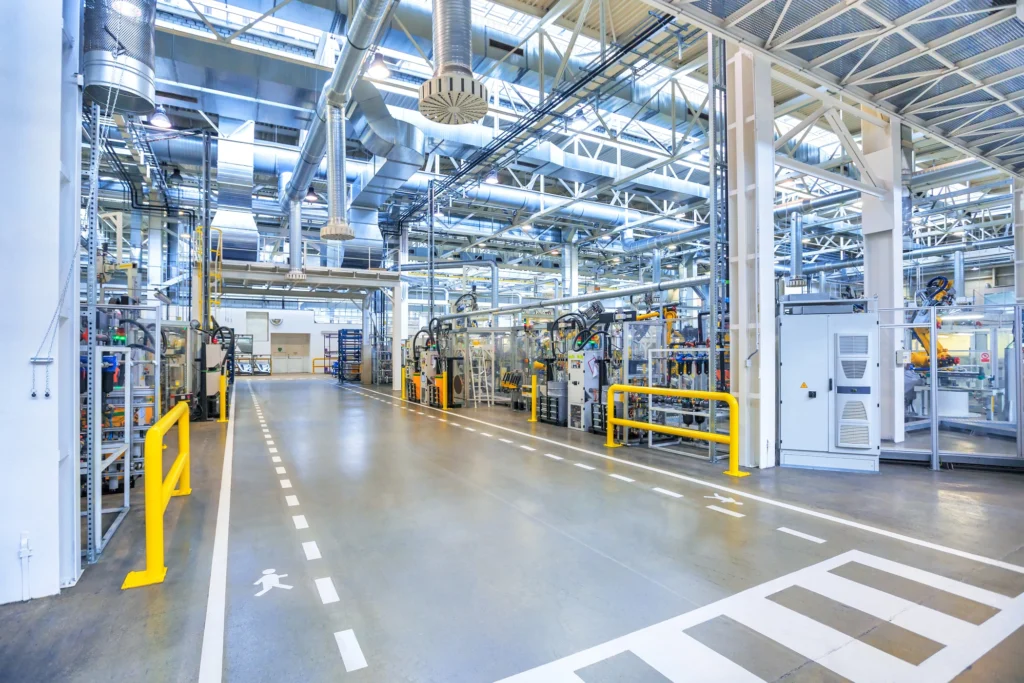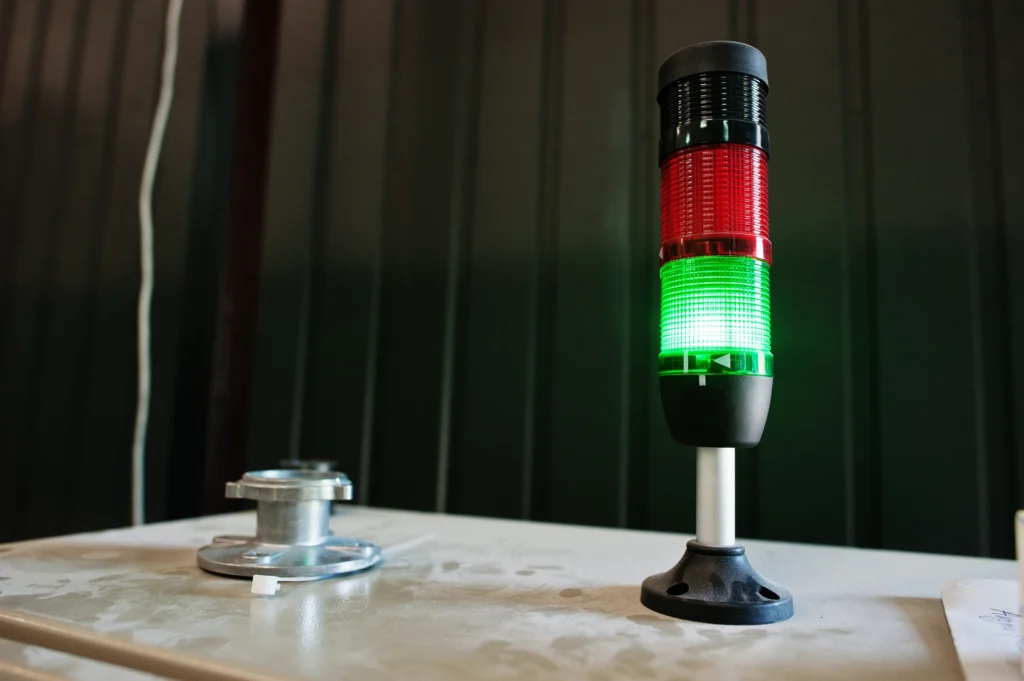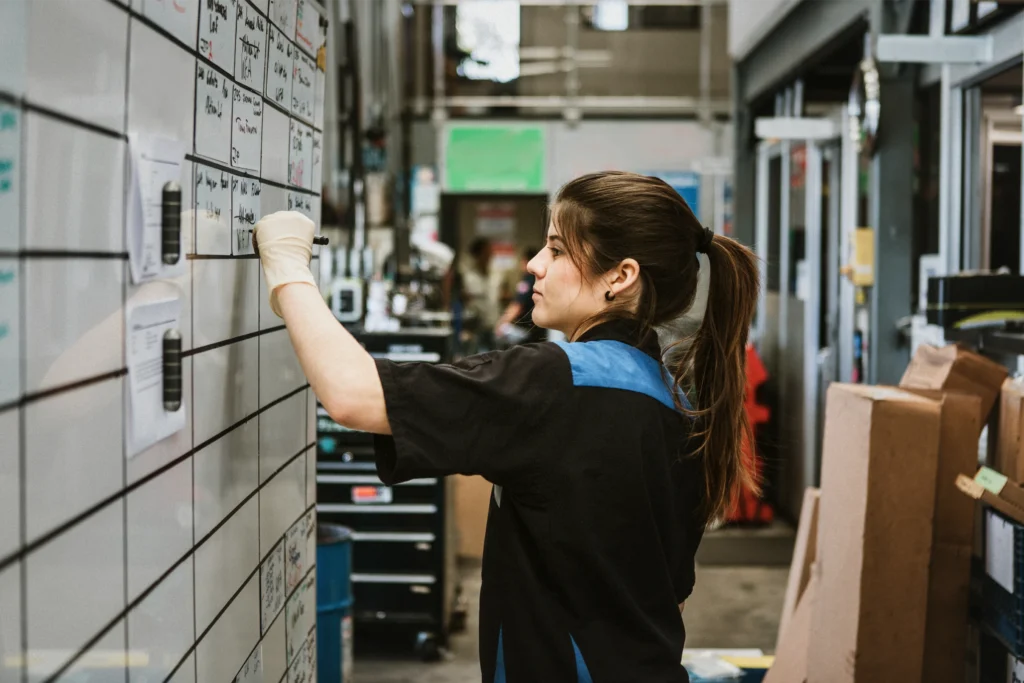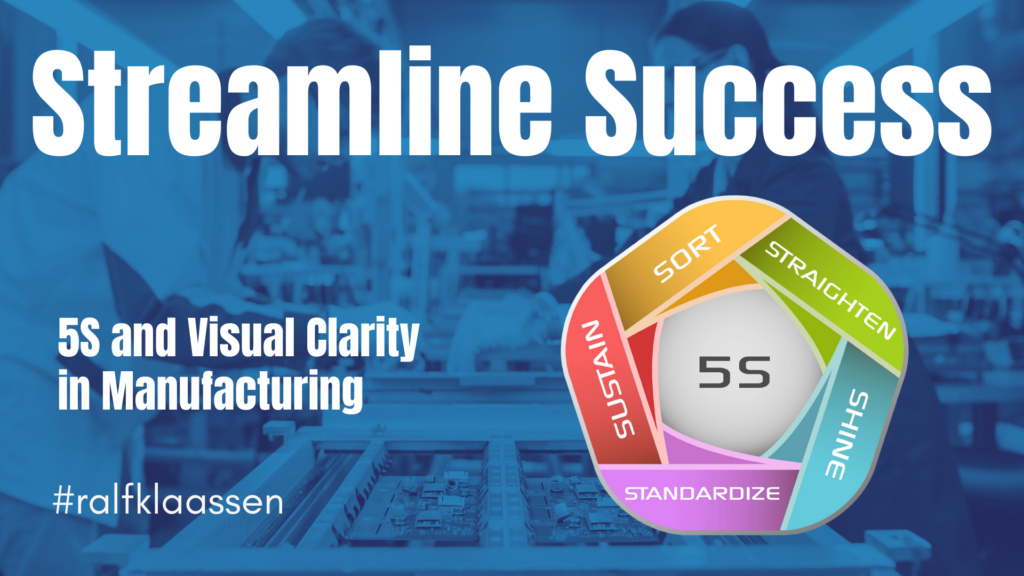Introduction
In today’s world, where safety, standardization, and quality are prioritized, achieving operational efficiency is an important factor for any successful company. With the onset of globalization and liberalization, the manufacturing sector has faced an extremely competitive environment, where productivity and quality are no longer ideal goals but an integral part of success and survival. The idea of lean manufacturing, brought about by technological advancement and market demands, is pushing businesses to realize what it means to maintain continuous performance improvement: they have to keep improving their products and simultaneously make their processes lean. In this changing business environment, the 5S methodology and the visual factory concepts have become reliable approaches, providing a harmonious integration of standardization and visual communication. This article focuses on how integrating these two approaches can help open a door toward operational excellence a culture of efficiency, quality, and safety while staying ahead of the competition.
The 5S Methodology
5S methodology is a systematic way of organizing the workplace and establishing standard operating procedures. Developed from Japanese words:
"Seiri (Sort), Seiton (Straighten), Seiso (Shine), Seiketsu (Standardize), and Shitekus (Sustain),"

This method has shown a significant improvement in reducing waste and increasing productivity.
- Sort: The first step of the process is to identify and eliminate any unnecessary items from the work area, leading to the decluttering and organization of the workspace.
- Straighten: In this step, the primary aim is to designate specific places for essential elements such as tools, materials, and equipment to ensure their accessibility and logical arrangement.
- Shine: This phase ensures the workspace is clean and organized. This has many benefits, including safety for workers and easier problem identification.
- Standardize: This step involves setting up a consistent system of practices and procedures to ensure that the success of the first three S’s is carried on board throughout the organization.
- Sustain: The final step highlights the significance of continuous improvement through conducting regular audits, training, and employee engagement mechanisms.
By incorporating the 5S methodology in the workplace, organizations can eliminate all non-value-added activities, reduce waste, and create a more efficient operational process. Nevertheless, to realize the full potential of this methodology, integration with the concept of the visual factory is essential.
The Visual Factory
The visual factory represents a lean manufacturing strategy utilizing visual cues to transmit information and thus improve understanding in the working space. By utilizing numerous visual aids and tactics, organizations can establish an environment that indicates the state of processes, operations, and statuses, both clearly and in a time-efficient manner, making the decision-making process easier and, thus, transparent.
Visual tools and techniques employed in a visual factory may include:
Floor markings and wayfinding signs: They form landmarks within the workspace, indicating work areas, identifying pathways, and providing directional commands, thus ensuring safety and efficiency.

Andon systems and information boards: Real-time display boards and Andon lights can brightly show production status, alert workers to problems, and facilitate the operator’s immediate response and resolution.

Shadow boards and tool organization: Through the use of patterns or shadows, these visual aids not only provide an appropriate space for tools and equipment but also assist in identifying missing items, which in turn helps to reduce search time and manage the workstation efficiently.
Kanban boards and visual workflows: Kanban boards and visual cues can illustrate the manufacturing processes and workflows well, which in turn help find problems and track progress, in addition to allocating resources.

Labels and color-coding: A clear labeling and a consistent color-coding system with the aid of which designated areas, equipment, and materials are quickly identified reduces operation errors and streamlines work.
The integration of 5S and the Visual Factory
Merging the 5S principles and the visual factory creates a force that strengthens the positive impact of both approaches. Through the use of 5S, businesses create the base for a wonderful and standardized workplace, and the visual factory will provide the tools to instruct and consolidate these standards. The visual clues and displays incorporated by a factory with the visual characteristics would always remind people of the 5s principles, which aim at maintaining an organized, neat, and clean environment. In contrast, 5S instills the discipline of observing and maintaining these visual tools and techniques. This, therefore, extends their lifetimes and increases their effectiveness.
In addition, integrating these two frameworks generates a culture of unceasing improvement and employee involvement. The visual aids and displays would prompt the personnel to actively identify and remedy inefficiencies or discrepancies with the defined standards. Along with this, using 5S empowers employees to take responsibility for their workplaces, creating a feeling of accountability and pride in their participation in the organization’s prosperity.
Using the 5S tool and the visual factory solutions presents many benefits beyond operational efficiency. These advantages include:
- Improved safety and ergonomics: Through waste reduction, application of defined pathways, and use of visual cues, the application of the 5S and visual factory results in a safer and more ergonomic working environment, reducing accident and injury risks.
- Enhanced quality and consistency: Visually implicative images and uniform procedures lead to repeatable and process-oriented activities and prevent product variations and malfunctions.
- Increased productivity and efficiency: Efficiencies in process flow, reduced search time, and optimized material flow contribute to higher productivity levels and shorter lead times, improving overall operational efficiency.
- Faster training and knowledge transfer: Visuals and standardized processes accelerate onboarding and knowledge transfer, thus making new employees more productive and reducing pressure on seasoned workers.
- Improved communication and collaboration: Through the use of a shared visual language and a common meaning for processes and procedures, the application of 5S in a visual factory environment improves communication and teamwork, eliminating work silos and fostering cross-functional coordination.
Embracing a Culture of Continuous Improvement

5S methodology and visual factory are not one-time activities but continuous processes of never-ending improvement. Continual audits, employee involvement, and determination to spotlight improvement areas are essential for the workability of these approaches. Organizations should instill a culture that motivates employees to improve, recognizing and compensating those who work towards eliminating redundant activities and developing a better visual factory. The training and knowledge-sharing sessions should be conducted at least weekly to maintain the 5S and visual management principles and ensure the new staff members are quickly integrated into the existing standards and practices.
Additionally, leveraging technology and data analytics applications can make 5S and visual factory approaches more efficient. Real-time monitoring and data visualization tools can give organizations access to process performance information and, hence, to spot areas for improvement and make evidence-based decisions.
Conclusion
To sum up, a powerful combination of 5S methodology and visual factory approach in systematically implementing operational excellence goes beyond simple efficiency gains. Companies can foster an environment that values continuous improvement, employee engagement, and shared responsibility for safety and quality by having a well-ordered, visual workplace. Although putting these techniques into practice could be very difficult and strenuous, the gains are worth it – higher productivity, lower production costs, better collaboration, and a competitive edge in today’s rapidly changing manufacturing market.

